The calculation of the development of a metal sheet is a typical question often asked by many of our customers. Fortunately their experience is a degree and if not, today there are many drawing programs that do this calculation, in the same way that many CNC bending machines have this possibility.
Obviously here we are going to explain things theoretically, but as many know in the process of bending a metal sheet, many factors intervene; type of punch and / or die, thickness of the sheet, type of material of the sheet, direction of the fibers of the sheet, etc., for this reason, before making a large series of pieces, it is always advisable to carry out a small test to check that all the parameters are correct once the sheet is bended.
But for those who still have doubts, we will give two options to calculate said development;
FIRST
It is the simplest calculation, since we do NOT perform the calculation of the neutral fiber of the material, but unfortunately it is only valid for thicknesses of up to 2 m/m maximum and consists of eliminating twice the thickness for each bend of 90º and thus obtaining the total development of the sheet.
We go better with a practical example; with a thickness of 1,5 m/m and to calculate the development of the following sheet (see sketch) we will do the next calculation:
70 – (2 x 1,5) + 25 – (2 x 1,5) + 15 = 104 m/m is the length of the piece (before being bended).
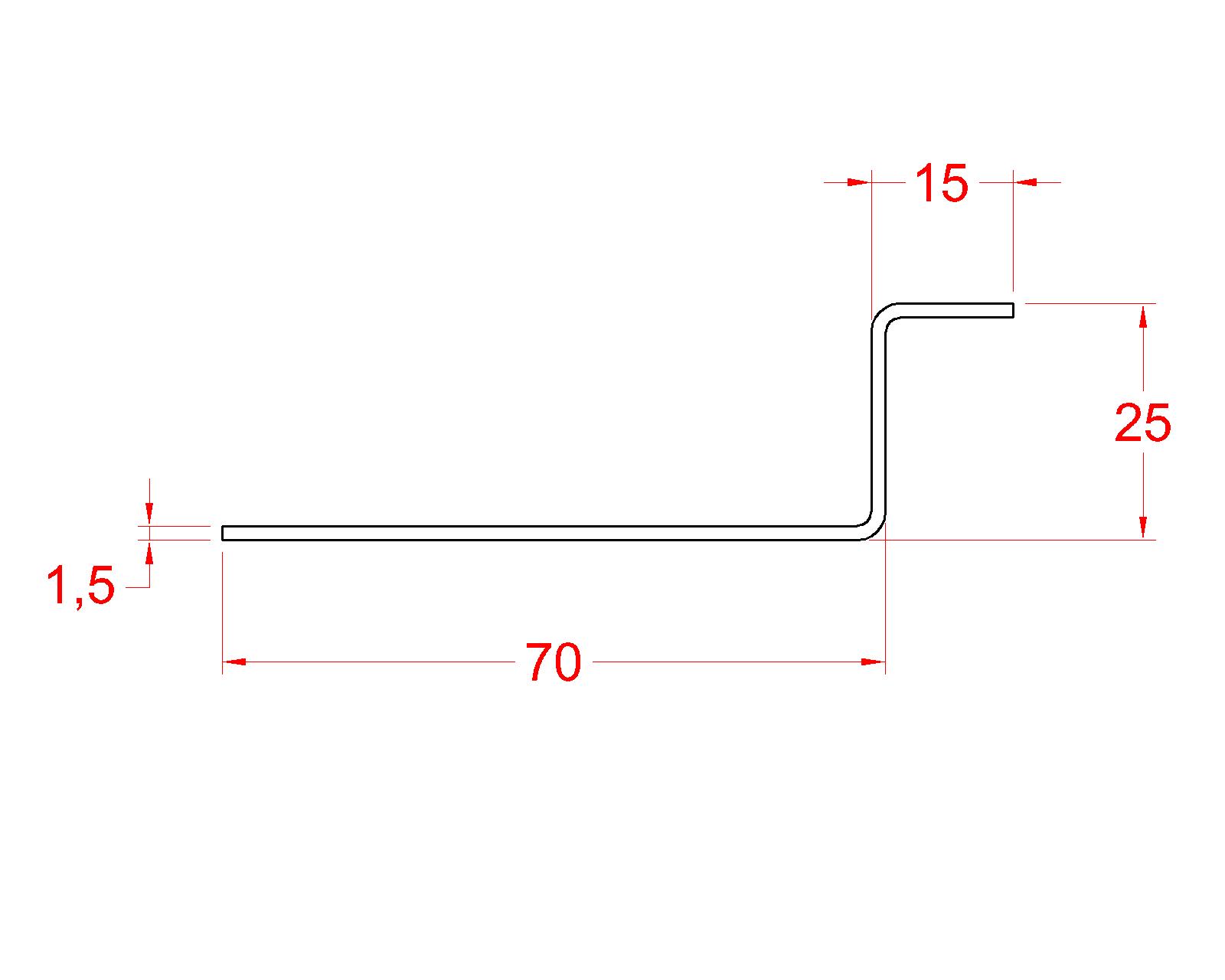
SECOND
It is the most reliable method, but above all before making such a calculation we must calculate the neutral fiber of the material to be bended.
What is the neutral fiber of the material?
Once the material has been folded we have a deformation of it, technically we call it BENDING FIBERS. Therefore there is an external area where the material has been lengthened resulting in TRACTION FIBERS and an internal part where the material has been shortened, COMPRESSION FIBERS. But just between these two areas there is one where the material has not suffered compression or traction, this area or more precisely this line is the so-called neutral line or NEUTRAL FIBER.
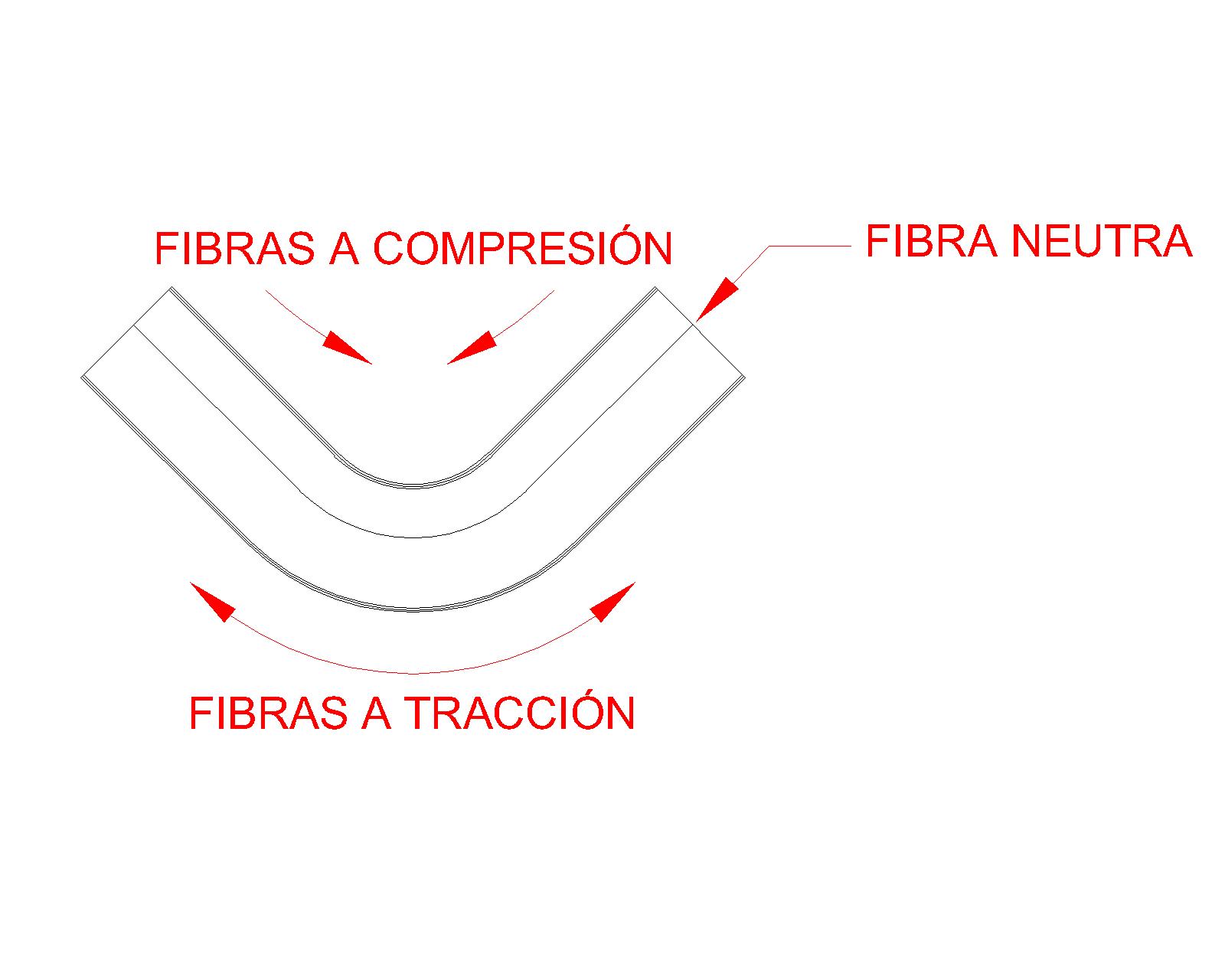
Neutral line situation
0,2 ——————————— 0,347 x thickness
0,5 ——————————— 0,387 x thickness
1 ———————————– 0,421 x thickness
2 ———————————– 0,451 x thickness
3 ———————————– 0,465 x thickness
4 ———————————– 0,470 x thickness
5 ———————————– 0,478 x thickness
10 ———————————– 0,487 x thickness
To give an example; if the inner radius is 3 m/m in a bend made of metal sheet with a thickness of 2 m/m, the following calculations will be done.
0,465 x 2 = 0,93 will be the position of the neutral fiber, see attached sketch
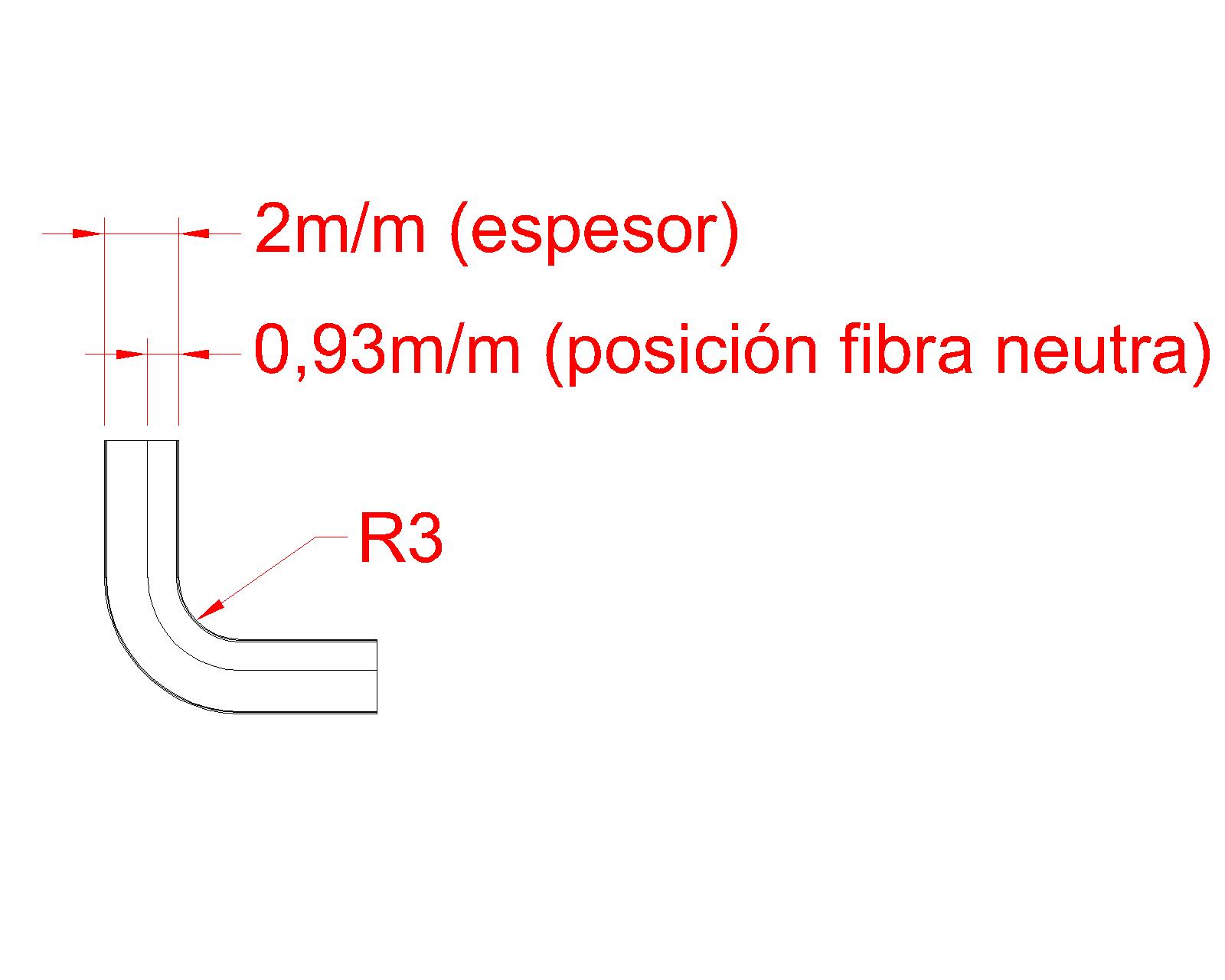
One thing is clear; the position of the neutral fiber is always between 0,3 and 0,5 of the thickness of the sheet
How to calculate the development of a bended metal sheet knowing the position of the neutral fiber?
We are going to give two very simple formulas to calculate the neutral fiber in an “L” shape and another one for a “U” shape and we will see it with an example for each case.
L shape
Formula:
Development = Flat face A + Flat face B + ¶ / 2 x (inner radius + neutral fiber)
Let’s put an example with real measurements to do the calculation;
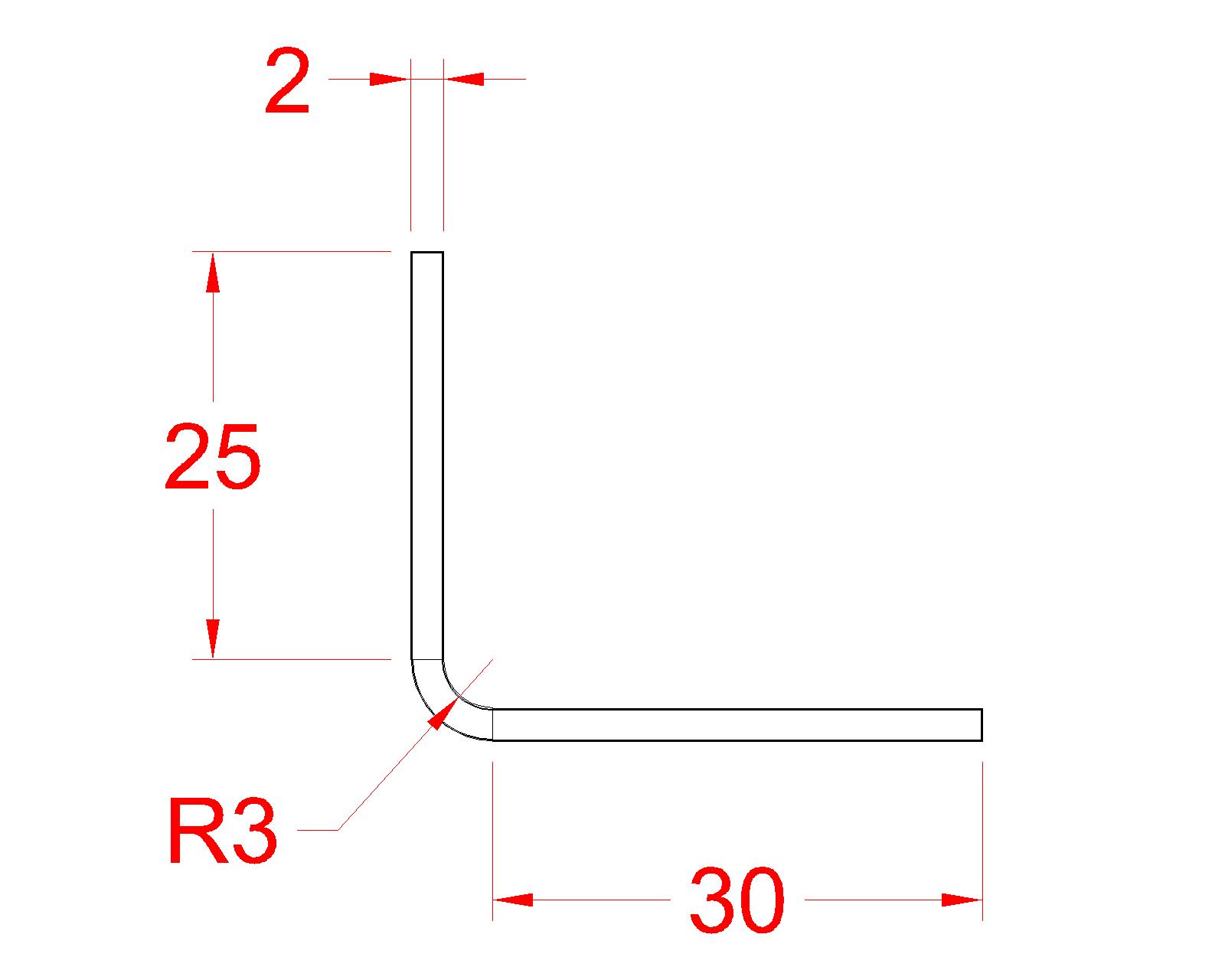
25 + 30 + 3,1415/2 x (3 + 0,93) = 61,17 m/m will be the development of the sheet
U shape
Development = Flat face A + Base + Flat face B + ¶ / 2 x (2 x inner radius + neutral fiber)
Let’s put an example with real measurements to do the calculation;
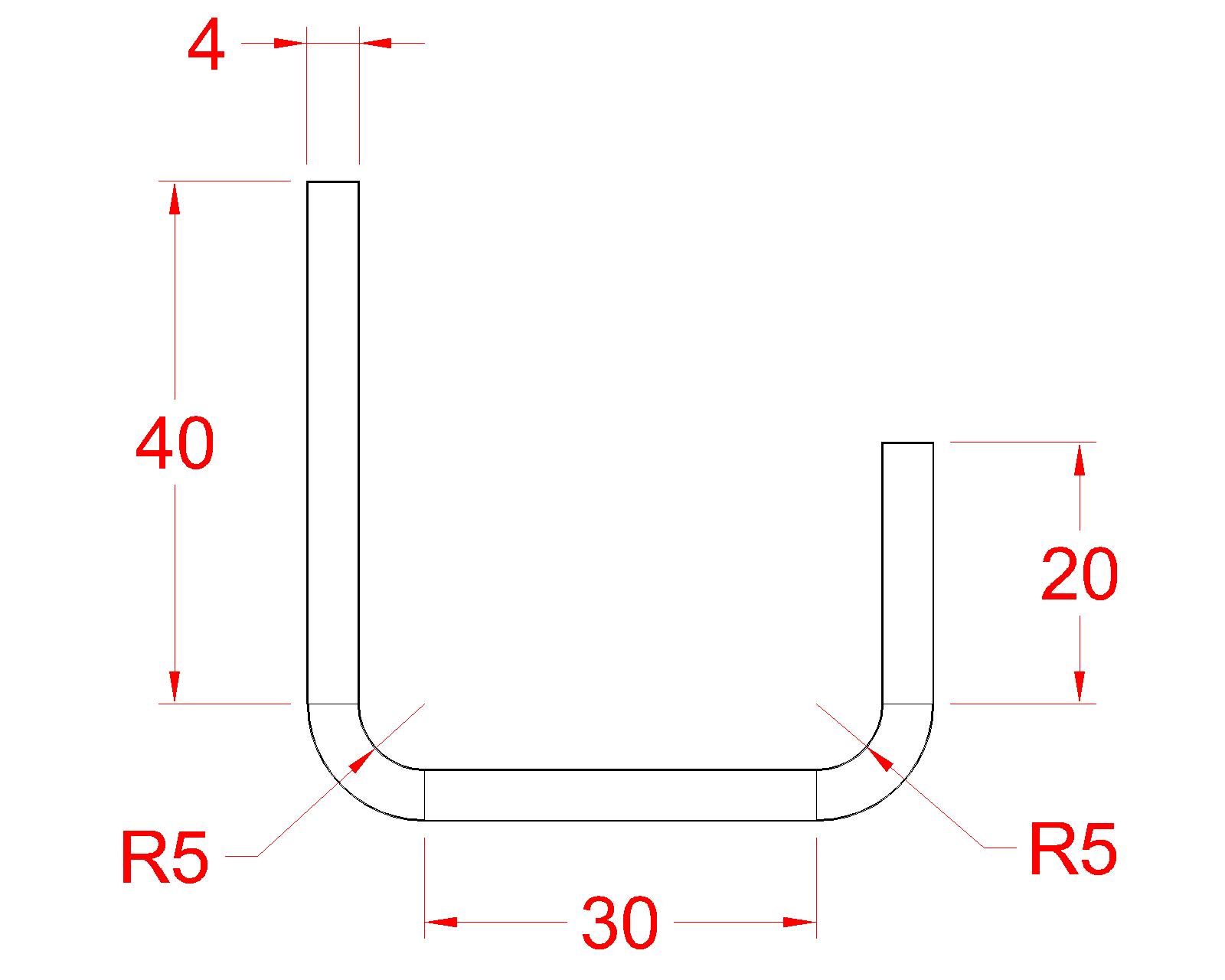
40 + 30 + 20 + 3,1415/2 x (2 x 5 + 1,912) = 111,71 will be the development of the sheet
Reverse engineering
As the sheet is a “live” material and the bending action depends on many factors (thickness of the material, quality and type of material, width of the die and a large etc), it is recommended that before making a large series , a small sample of metal sheet is bended, verifying the measurement before bending and rechecking measurements once bended, so we can adjust the development according to our own measurements and with the maximum controlled factors.
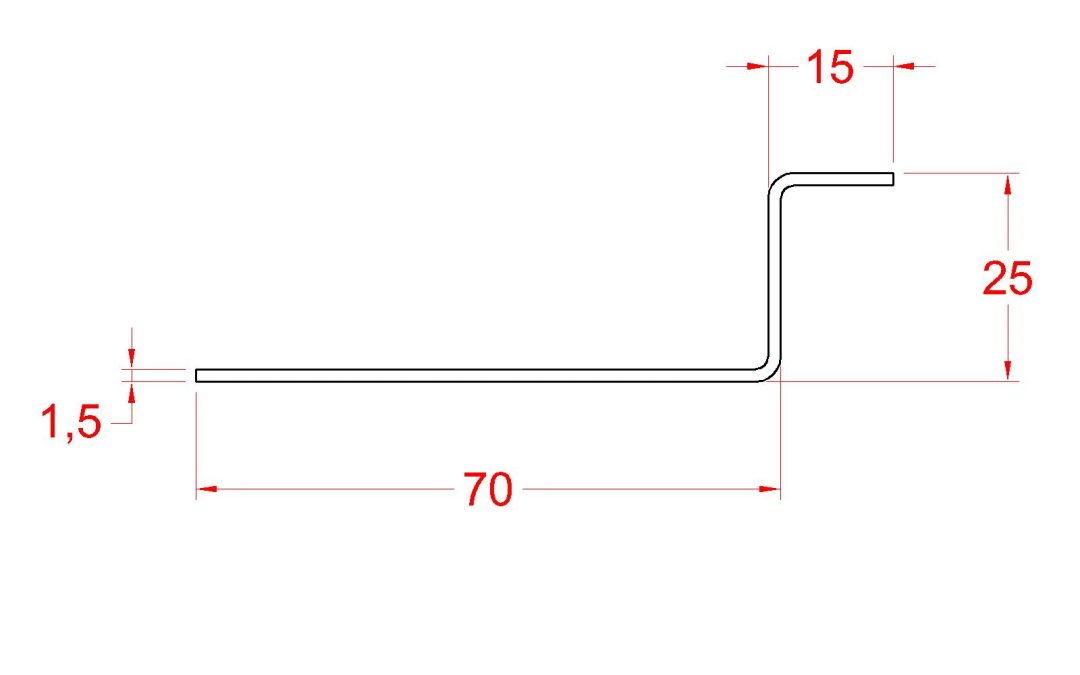
Thank you for the tutorial material I’ve found on this site.
I have a question for the U-shape formula.
Why is the neutral fiber not doubled? I’d expect it should be multipied by 2 as well.
Thank you for the comment.
If it must be multiplied by 2.
Thanks for sharing.
I think that the calculation of the flatten needs revising because it should be 111.7147
This is the correct calculation;
3.1415 / 2 x (2 x 5 + 1.912) = 18.71 and
40 + 30 + 20 = 90
Therefore: 90 + 18.71 = 108.71
but,
3.1415/2 x (2*(5+1.912)) = 111.71
40 + 30 + 20 = 90
therefore : 90 + 111.71 = 111.71
is it correct. ?
It is correct, now we modify it, thank you!!
if bending is les than 90 degree like 45, 25, 10 degree than how to calculate the development length.
The position of the neutral fiber is not modified. But yes, if the angle is more closed there is a little stretching of the sheet metal and it can modify the development a little, but this is enough for another POST…… 😉
How to calculate bending length with radius, thickness, length but no value for neutral fiber
In the section “NEUTRAL LINE SITUATION” you will see how to calculate the neutral fiber